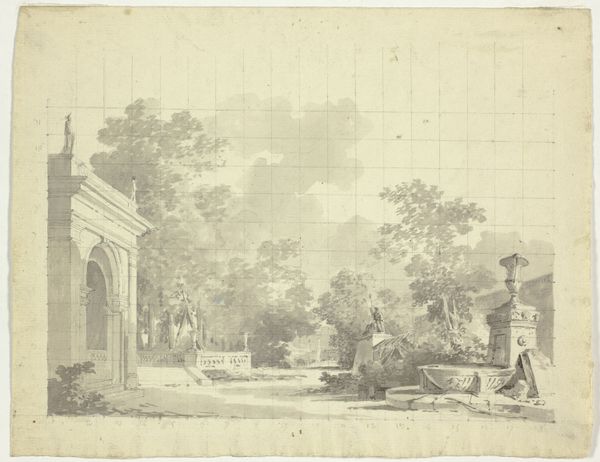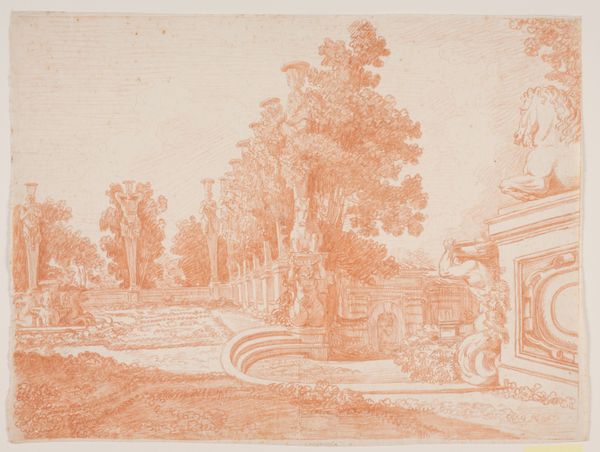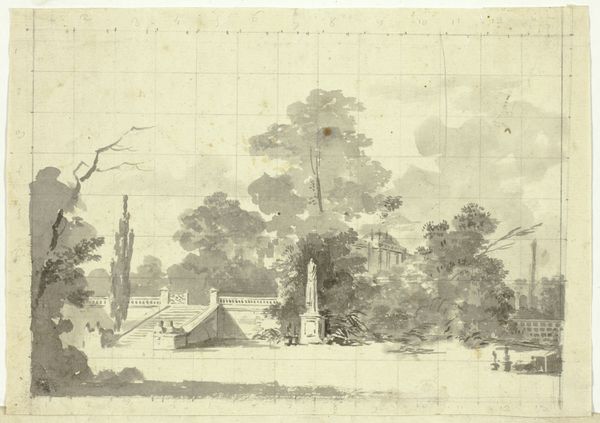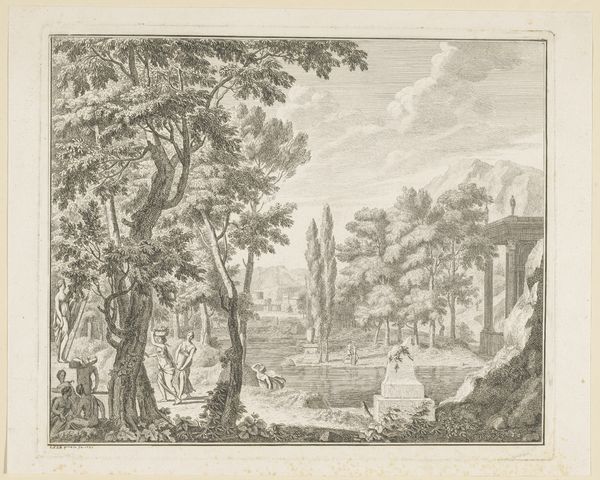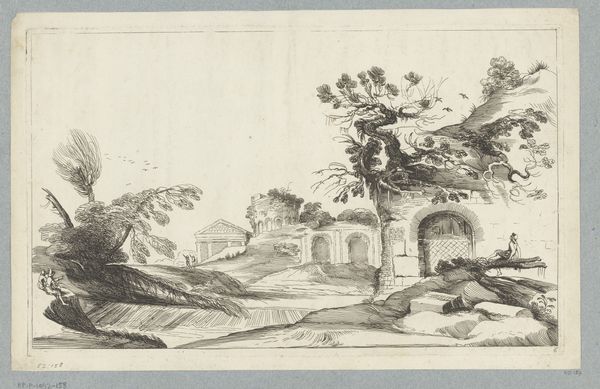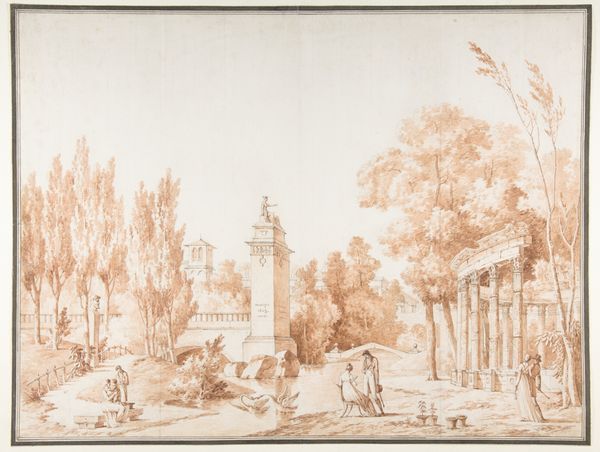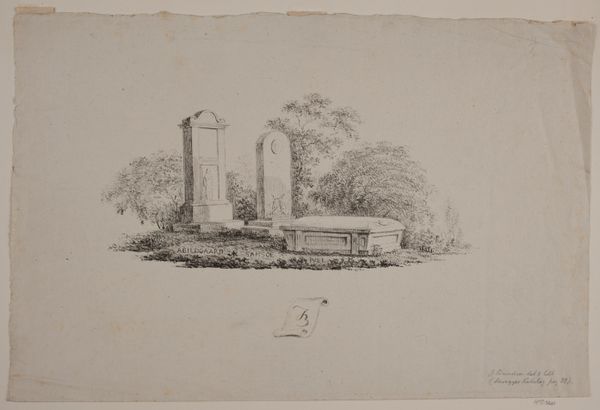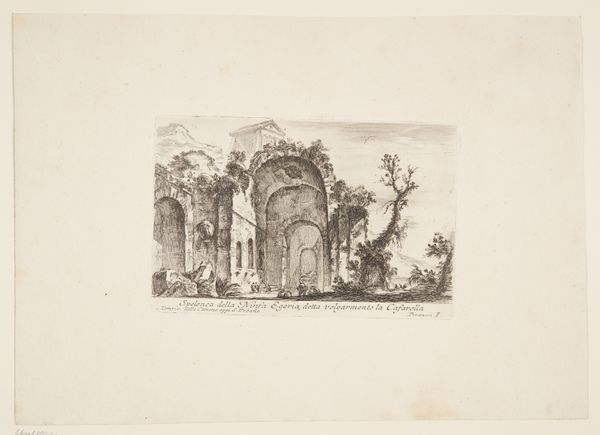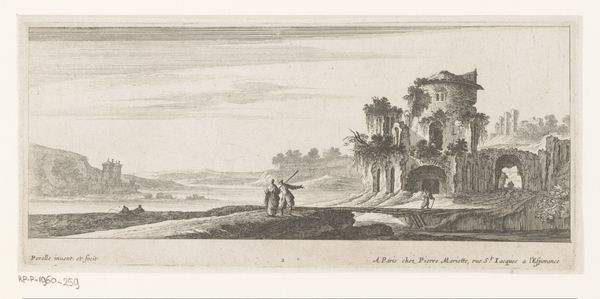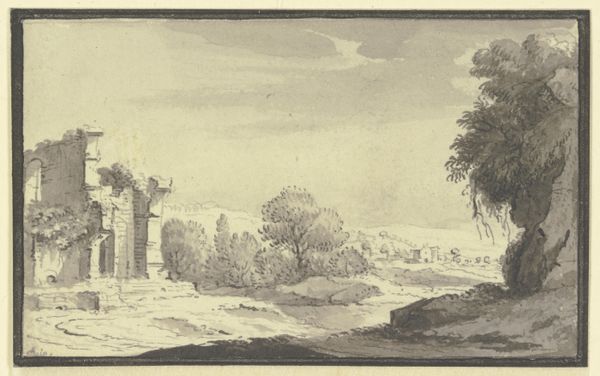
View of the Park at Versailles: Ruined Columns and an Open Iron Gate n.d.
0:00
0:00
drawing, print, paper, watercolor, ink, chalk, graphite
#
drawing
#
neoclacissism
# print
#
landscape
#
classical-realism
#
paper
#
watercolor
#
ink
#
chalk
#
graphite
Dimensions: 197 × 242 mm
Copyright: Public Domain
Curator: Let's turn our attention to Antoine Pierre Mongin’s "View of the Park at Versailles: Ruined Columns and an Open Iron Gate." It's currently residing here at the Art Institute of Chicago. Editor: It evokes such a melancholy feeling. The muted grays, the crumbling architecture. There’s a real sense of decline being depicted. Curator: Indeed. Mongin used a combination of ink, watercolor, chalk, and graphite on paper. Notice the meticulous grid underneath? It provides a foundation for his precise representation of space and form. Editor: Yes, the ruined columns specifically exhibit beautiful balance between line, tone and shade to render structure and also its breakdown to the elements. I wonder about this image being captured in the Neoclassical moment: how does the political state of France impact this work that feels equally fascinated with, and apprehensive about, empire? Curator: An astute observation! This work definitely echoes the Neoclassical movement’s preoccupation with the aesthetics of antiquity but it also shows, with this view, the state of ruin that overtakes once mighty and triumphant powers and entities. Editor: Do you think Mongin’s focus on landscape relates to a broader social commentary in French art of that period? This feels like an alternative view to the glorification usually displayed in portraiture and military triumphs. Curator: I'd argue that, landscapes began to symbolize more than just the beauty of nature. They offered commentary on social structures and perhaps provided solace from the revolutionary turmoil, especially for the Aristocratic class. Editor: These ruined elements create almost theatrical scenery – or stage of empire if we will- so delicate it is rendered to almost the same density than the vegetation that surrounds them: like empire is about to turn into earth and plants and be forgotten. Curator: A persuasive argument, thinking of these columns and open gates as staging… And indeed it encapsulates the transition of power that inevitably ends as the wheel of fortune continues its course. The medium allows for a dreamlike softness, the delicate lines contributing to that emotion, but its decay does not diminish its aesthetic charge. Editor: I leave with my senses alert to see and learn more about what these images conceal and reveal. Curator: It reminds us of the power art holds, not just as aesthetic pleasure, but as an emblem of transition in a moment of political turbulence.
Comments
No comments
Be the first to comment and join the conversation on the ultimate creative platform.
